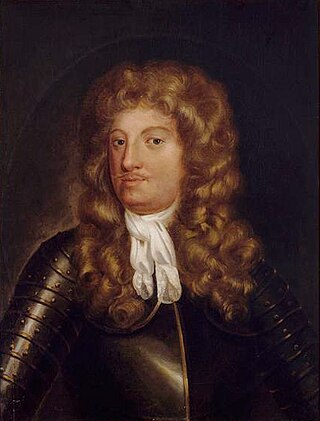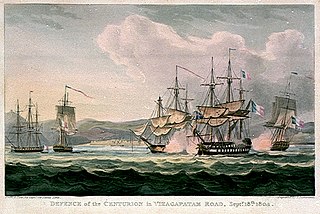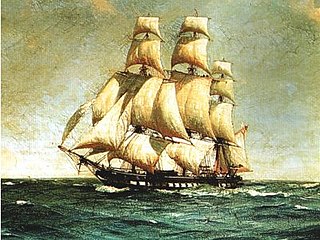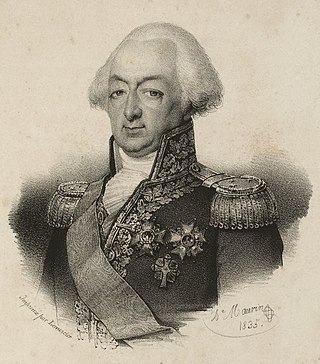Life
Born to hotelier parents on rue de l'oranger in Dieppe, his godfather was Nicolas Boiloy, a businessman in the Saint-Remy parish, and his godmother was the widow Michel Martel, a businesswoman in the parish of Saint-Jacques. Like his brother Jean-Vincent Deniéport, Louis was a brilliant student at the Oratorian school and won the general prize in 1785, though he had to enter the Oratorian house very young. His passion for the sea and probable aptitude for action rather than philosophical meditation interrupted his studies aged 14 when he began serving on the privateers that were common in the port of Dieppe. On these he gained seagoing skills in the subaltern posts of novice, matelot and aide-pilote.
Better educated than his fellow seamen and also daring and able, he came to public attention just as the mainly-noble officer corps of the navy was weeded out on the French Revolution. On 9 messidor year II (9 June 1794), he was made an enseigne "entretenu", by decree of Salicetti, representative of the people. A note from Toulon on his bearing stated "his manners are pure, exact in the service, inclined neither to wine nor gaming, good in political conduct, educated, with robust health, loved by his crew".
He took command of the corvette Brune on 5 frimaire year II (15 November 1794) and went to Toulon under the command of general Martin. He fought in the action in which the British captured the Censeur and Ça Ira. In the course of this action Le Timoléon was dismasted and sinking, under fire from three British ships surrounding it. The Brune managed to draw off the British ships' fire, for which action general Martin promoted Deniéport to lieutenant de vaisseau on 21 germinal year IV (10 April 1796). Deniéport then took part in a long campaign in the Levant and, when he came under suspicion from agents of the French Directory, the city of Sète attested to his loyalty. He thus rose up the career ladder to capitaine de frégate on 14 floréal year V (3 May 1797).
On 2 brumaire year VII (23 October 1798) he received a provisional commission as a brevet capitaine de vaisseau commanding the Leander, putting him under the command of chef de division Lejoille. He was sent to Corfu, which Russia and the Ottoman Empire were hoping to annex, doing his best with a lean Greek and Venetian crew. However, his ship was surrounded by an enemy fleet and captured, though he was soon the subject of a prisoner exchange and showered with recommendations and flattering references. Commissioner general Dubois certified that "Commander Deniéport fulfilled all the dutier of a good officer and a brave republican" and the whole garrison of Corfu also witnessed to his good behaviour. Contre-amiral Perré wrote that Deniéport showed "conduct worthy of praise, a good officer, a true seaman, zealous, active, who very well fulfilled the several particular and very delicate tasks he was entrusted with". Général de division Chabot also wrote "This captain, with his vessel devoid of people, resisted beyond all praise" and vice admiral Thévenard praised "his zeal and his talent". Ill and tired out from his hard voyages, Deniéport asked for leave to spend time in Dieppe, which he had not visited for seven years.

Abraham Duquesne, marquis du Bouchet was a French naval officer, who also saw service as an admiral in the Swedish navy. He was born in Dieppe, a seaport, in 1610, and was a Huguenot. He was the son of a naval officer and therefore became a sailor himself, spending his early years in merchant service.

Jean-Marie Charles Abrial was a French Admiral and Naval Minister. He fought in both World wars, and was known mostly for his actions at Dunkirk in 1940.

Julien Marie Cosmao-Kerjulien was a French Navy officer, admiral, best remembered for his role in the Battle of Trafalgar.

Captain is the name most often given in English-speaking navies to the rank corresponding to command of the largest ships. The rank is equal to the army rank of colonel and air force rank of group captain.

Count Honoré Joseph Antoine Ganteaume was a French Navy officer and Vice-admiral.

The Sémillante was a 32-gun frigate of the French Navy and the lead ship of her class. She was involved in a number of multi-vessel actions against the Royal Navy, particularly in the Indian Ocean. She captured a number of East Indiamen before she became so damaged that the French disarmed her and turned her into a merchant vessel. The British captured her and broke her up in 1809.

The Army of Italy was a field army of the French Army stationed on the Italian border and used for operations in Italy itself. It is best known for its role during the French Revolutionary Wars and Napoleonic Wars.

Antoine Jean Marie Thévenard was a French politician and vice admiral. He served in the French ruling regimes of Louis XVI, those of the Revolution, Napoleon I and Louis XVIII, and is buried at the Panthéon de Paris. His son Antoine-René Thévenard, capitaine de vaisseau, was killed at the Battle of Aboukir whilst commanding the 74-gun Aquilon.

Sensible was a 32-gun Magicienne-class frigate of the French Navy. The Royal Navy captured her in 1798 off Malta and took into service as HMS Sensible. She was lost in a grounding off Ceylon in 1802.

François Étienne de Rosily-Mesros was a French naval commander of the French Revolutionary Wars and Napoleonic Wars. He is notable as being chosen by Napoleon to succeed Villeneuve as commander of the combined Franco-Spanish fleet at Cádiz, arriving to take up his appointment just after its defeat at Trafalgar. His name is inscribed on the east side of the Arc de Triomphe.

Maxime Julien Émeriau de Beauverger was a French Navy officer and admiral.
Louis-Léonce Trullet was a French Navy officer.
Jean-Jacques Magendie was a French Navy officer. He famously captained the flagship Bucentaure at the Battle of Trafalgar.

Alceste was a Magicienne class frigate of the French Navy, launched in 1780, that the British seized at the Siege of Toulon. They transferred her to the Kingdom of Sardinia, but the French recaptured her a year later in the action of 8 June 1794. The British captured her again at the action of 18 June 1799 and took her into service as HMS Alceste. In 1801 she became a floating battery and she was sold the next year.
Jean-Honoré de Trogoff de Kerlessy was a French count and contre-amiral, notable for handing over the French fleet at Toulon over to the British in 1793.

François-Paul Brueys d'Aigalliers, Comte de Brueys was a French naval officer who fought in the American War of Independence and as a commander in the French Revolutionary Wars. He led the French fleet in the Mediterranean campaign of 1798 until his death at the Battle of the Nile, at the rank of Vice-Admiral. He was also a Freemason in the La Bonne Foi lodge at Montauban.
Brune was a Coquette class 20-gun corvette of the French Navy, launched in 1781 and captured in 1799 at the siege of Corfu, which saw a joint Russian and Turkish fleet capture Corfu from an occupying French force.
The Battle of Dungeness or the Battle of Cape Dungeness was a naval battle that took place during the Second Anglo-Dutch War. A combined French and Dutch fleet under Job Forant encountered a larger English fleet commanded by Admiral Sir Thomas Allin, 1st Baronet. The English attacked and in poor visibility a series of encounters left several French and Dutch ships badly damaged. The battle ended with the English having captured the French ship Le Rubis.
Louis-André Senez was an officer of the French Navy during the Revolutionary and Napoleonic wars.
Louis-Marie Le Gouardun was a French Navy officer. Starting his career in the French East India Company, he served under Suffren in the Indian Ocean during the Anglo-French War, and later in important actions of the French Revolutionary Wars. He commanded Dix-Août during her victorious Action of 24 June 1801 against Swiftsure. After serving through the First French Empire, Le Gouardun was forcibly retired at the Bourbon Restoration.
This page is based on this
Wikipedia article Text is available under the
CC BY-SA 4.0 license; additional terms may apply.
Images, videos and audio are available under their respective licenses.











